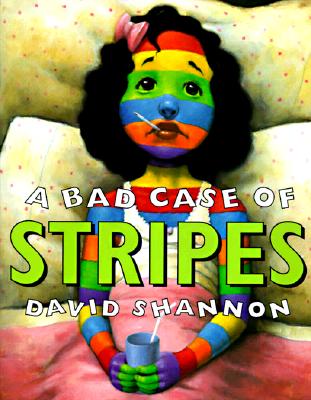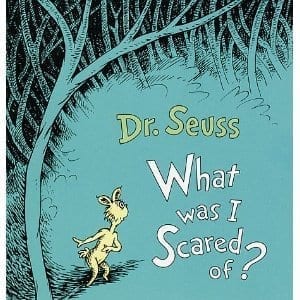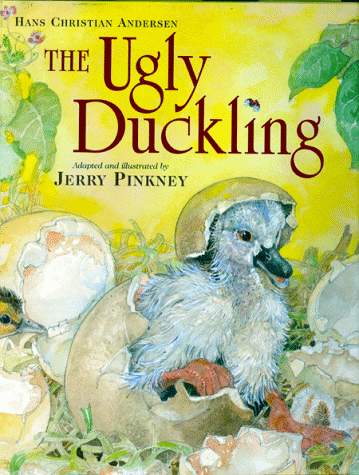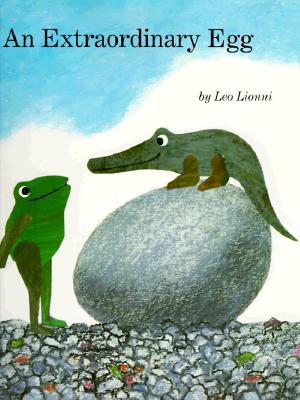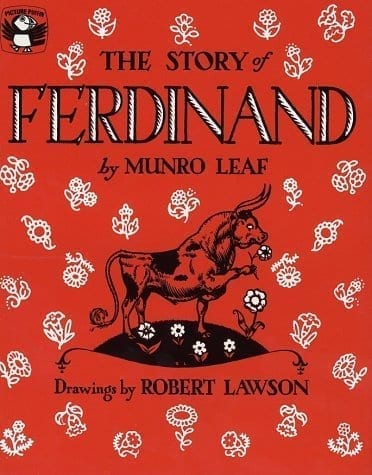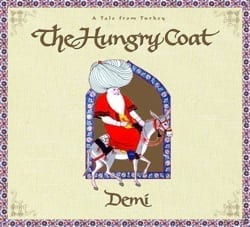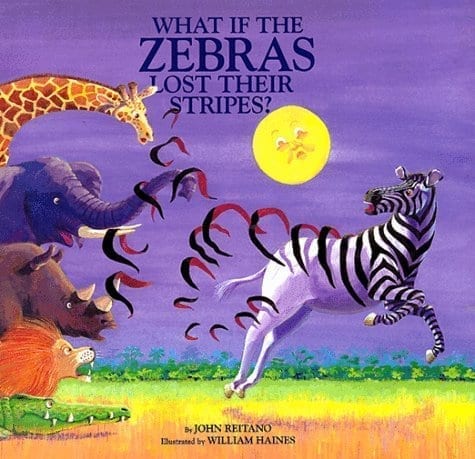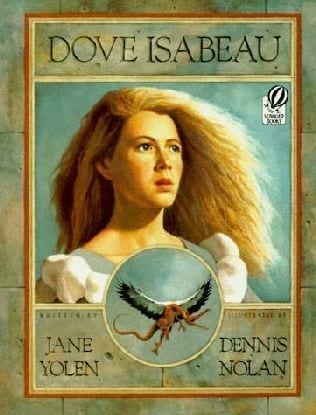“A Bad Case of Stripes” By David Shannon
Camilla Cream loves lima beans but she never eats them. Why? Because the other kids in her school don’t like them. And Camilla is very, very worried about what other people think of her. In fact, she is so worried she is about to break out into a very bad case of the stripes. This book is very effective at illustrating the importance of accepting your real self and not worrying so much what others might think. It may also be applied to “Climbing Out,” as it discusses how we let peer pressure affect us.
“What was I Scared of” From Sneetches and Other Stories, By Dr. Seuss
In this story, there is a pair of pale green pants with no one inside of it. The main character is afraid of them, but only because he never bothered to find out about them and what they were about. In fact, the empty green pants are just as afraid of him as he is of them! Then they both realize they are pretty much the same. The lesson is that you shouldn’t judge someone without getting to know them. This book also contains the story “Too many Daves.” It is equally short and cute, although its meaning is less obvious. It is a story about the need for individualism.
“The Ugly Duckling” By Jerry Pinkney
This is an adaptation of Hans Christian Anderson’s original. There are many other versions, but this is my favorite. You can also find this story in many treasuries of Anderson tales. The story is of an ugly duckling who is ostracized for a year by the other animals until he grows into a beautiful swan. In this version, the duckling is teased by his siblings but loved by Mother Duck (Plugging In). Eventually he runs away and has a series of adventures and challenges (Jumping Hurdles). All the while, he is growing and transforming and in the triumphant ending, finds peace and happiness in his true identity. This is great for discussing strengths, differences, and not being judgmental.
“An Extraordinary Egg” By Leo Lionni
One day Jessica, an adventuresome young frog, rolls home a beautiful stone to show her two froggy friends. Marilyn, who knows “everything about everything,” states with absolute certainty that it’s a chicken egg. So when an alligator hatches, the three frogs are surprised and delighted with how well their “chicken” can swim. When she saves Jessica from drowning in a tangle of weeds, the two become inseparable friends. One day, a bird comes to lead the alligator back to her mother; Jessica accepts this with equanimity. Jessica is a heroine whose wonder at the world and loyalty to her friends helps her see past differences and even mistaken identity to be a true friend.
“The Story of Ferdinand” By Munro Leaf
This is the timeless tale of a little bull in Spain who doesn’t mind being different from the rest of the herd. Ferdinand is a gentle creature who would rather sit around and smell the flowers than butt his way through life; but when he plants himself down one day on a bumblebee, he gets a jolt that propels him into the bullring in Madrid. The story is funny and endearing, and the illustrations are hilarious. It shows a world that is often mean and ugly but Ferdinand, always true to himself, is oblivious to this world, and just goes on living his own life in his own way. In the end, he shows the power of being your true self.
“The Hungry Coat” By Demi
Delayed by an escaped goat, the Turkish folk hero Nasrettin Hoca attends a friend’s banquet clad in a filthy, tattered coat. The host is embarrassed, the guests shun him, and no one serves him food. Nasrettin goes home, bathes and dresses in his finest clothes, and returns to the banquet, where he stuffs food and wine into his coat. Asked why he feeds his coat, Nasrettin notes his earlier appearance and explains, “This shows it was the coat and not me that you invited to your banquet.” An afterward adds background on Hodja folklore but does not cite a source. The well-paced retelling retains the sly, wise humor of traditional Nasrettin tales teaching a truly important life lesson: It’s not the clothes that make the man, but the person inside who counts, or as Nasrettin Hoca, the main character, states, “He who wears heaven in his heart is always well dressed.”
“What If The Zebras Lost Their Stripes?” By John Reitano
With rhymed couplets and goofy illustrations, this parable attempts to teacht hat love looks beyond superficial differences. Reitano, en educator and speaker, asks, “What if the zebras lost their stripes, and some lost black and some lost white?” Would the zebras recognize their common identity, or would they begin to notice their new differences in color and start to fight? Would they move to seperate lands, or would the young zebras be allowed to laugh and play together? Reitano raises the stakes with each new possibility of the choices the zebras might make. Though Haine’s vibrant colors add warmth to the illustrations, the animal’s human-like expressions are jarring. This simplistic tale about overcoming differences and achieving harmony overlooks the deeper ramifications of racism.
“Dove Isabeau” By Jane Yolan
A beautiful, soft, sweet, and innocent dove of a girl is transformed into a dragon after suffering the enchantment of her wicked and jealous stepmother. Isabeau, unlike many of her fairy tale counterparts, isn’t going to passively watch her knight in shining armor be turned to stone for all eternity, and she takes sword in hand to try and save the day. This story contains messages about unconditional love, of looking beyond appearances, of being true to the person within, and of self-acceptance. These lessons are beautiful and touching for all ages.
